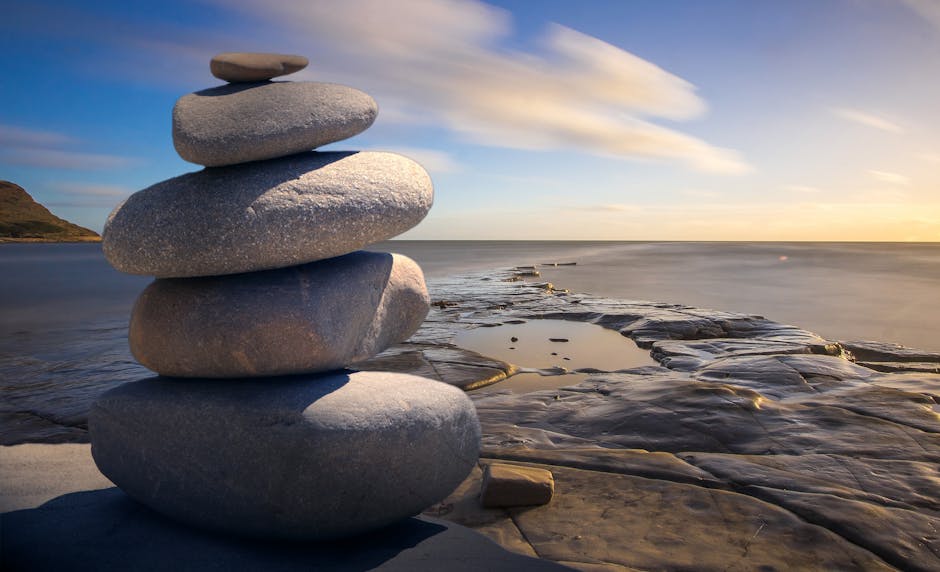Exploring Inner Peace Practices: A Comprehensive Guide
Inner peace is a state of being where one is mentally and spiritually at peace, with enough knowledge and understanding to keep oneself strong in the face of discord or stress. In today’s fast-paced and chaotic world, finding inner peace has become more important than ever. People are constantly seeking ways to cultivate this sense of calm and tranquility within themselves to combat the pressures and anxieties of everyday life. This quest for inner peace has given rise to a variety of practices and techniques that are aimed at promoting mental clarity, emotional well-being, and spiritual harmony.
The Power of Inner Peace
Inner peace is not just about feeling good; it has far-reaching benefits for our overall health and well-being. Research has shown that individuals who cultivate a sense of inner peace are better equipped to handle stress, have lower levels of anxiety and depression, improved relationships, and even better physical health. When we are at peace within ourselves, we are more resilient, compassionate, and able to navigate life’s challenges with grace and equanimity.
Mindfulness Meditation
One of the most popular and effective practices for cultivating inner peace is mindfulness meditation. This ancient practice involves paying attention to the present moment without judgment. By focusing on our breath, sensations, thoughts, and emotions, we can develop a deeper awareness of ourselves and our surroundings. Mindfulness meditation has been scientifically proven to reduce stress, anxiety, and depression while improving focus, memory, and emotional regulation.

Many people incorporate mindfulness meditation into their daily routine, setting aside a few minutes each day to sit quietly and observe their breath. Over time, this practice can help us become more present, compassionate, and aware of our thoughts and feelings, leading to a greater sense of inner peace and well-being.
Yoga
Yoga is another powerful tool for promoting inner peace. This ancient practice combines physical postures, breathing exercises, and meditation to create a harmonious union between body, mind, and spirit. The gentle movements and stretches of yoga help release tension and stress from the body, while the focus on breath and mindfulness calms the mind and promotes relaxation.

Regular practice of yoga can help improve flexibility, strength, and balance, as well as reduce anxiety, insomnia, and chronic pain. By connecting with our breath and body through yoga, we can cultivate a sense of inner peace and harmony that extends beyond the mat and into our daily lives.
Gratitude Journaling
Gratitude journaling is a simple yet powerful practice that can help shift our focus from what is lacking in our lives to what we already have. By taking a few minutes each day to write down things we are grateful for, we can train our minds to notice and appreciate the positive aspects of our lives. This practice has been shown to increase happiness, optimism, and overall well-being.

Keeping a gratitude journal can also help us cultivate a sense of inner peace by fostering feelings of contentment, abundance, and connection. When we focus on the good in our lives, we are more likely to feel at peace with ourselves and the world around us.
Breathwork
Conscious breathing techniques, also known as breathwork, are a powerful way to calm the mind, reduce stress, and promote inner peace. By focusing on our breath and practicing deep, intentional breathing, we can activate the body’s relaxation response and quiet the mind. Breathwork can help us release tension, increase energy, and improve mental clarity.

There are many different types of breathwork techniques, including diaphragmatic breathing, box breathing, and alternate nostril breathing. By incorporating breathwork into our daily routine, we can cultivate a greater sense of inner peace and resilience in the face of life’s challenges.
Self-Compassion Practices
Self-compassion involves treating ourselves with kindness, understanding, and acceptance, especially in times of struggle or suffering. By practicing self-compassion, we can cultivate a greater sense of inner peace and well-being. Research has shown that individuals who are self-compassionate are less likely to experience anxiety, depression, and burnout.

Self-compassion practices include self-soothing, self-care, positive self-talk, and self-acceptance. By treating ourselves with the same kindness and care that we would offer to a friend, we can develop a deeper sense of inner peace and self-love.
Connecting with Nature
Spending time in nature is another powerful way to cultivate inner peace. Whether it’s taking a walk in the park, hiking in the mountains, or simply sitting in a garden, being in nature can help us relax, recharge, and reconnect with ourselves and the world around us. Research has shown that spending time in nature can reduce stress, anxiety, and depression while improving mood, creativity, and overall well-being.

By immersing ourselves in the sights, sounds, and sensations of the natural world, we can cultivate a sense of inner peace, awe, and gratitude. Nature has a way of reminding us of our interconnectedness with all living beings and the beauty and abundance of the world we inhabit.
Practicing Mindful Eating
Another way to cultivate inner peace is through mindful eating. By paying attention to the colors, textures, flavors, and smells of our food, we can experience a greater sense of satisfaction, pleasure, and gratitude. Mindful eating involves eating slowly, savoring each bite, and being fully present with our food.

Research has shown that mindful eating can help reduce overeating, improve digestion, and promote overall health and well-being. By cultivating a mindful relationship with food, we can nourish our bodies, minds, and spirits and cultivate a greater sense of inner peace and harmony.
Setting Boundaries
Setting clear boundaries is essential for maintaining inner peace and well-being. Boundaries help us protect our time, energy, and emotions, and establish healthy relationships with ourselves and others. By learning to say no, assert our needs, and communicate effectively, we can create a sense of safety, respect, and balance in our lives.

When we honor our boundaries, we give ourselves permission to prioritize self-care, pursue our passions, and focus on what truly matters to us. By setting boundaries that align with our values and needs, we can cultivate a greater sense of inner peace, empowerment, and fulfillment.
Conclusion
To wrap things up, cultivating inner peace is a journey that requires dedication, practice, and self-awareness. By incorporating mindfulness meditation, yoga, gratitude journaling, breathwork, self-compassion practices, connecting with nature, mindful eating, and setting boundaries into our daily lives, we can create a sense of calm, clarity, and balance that extends beyond ourselves and into the world around us. Inner peace is not a destination to reach but a path to walk, a practice to embody, and a state of being to cultivate each day. May we all find the peace within ourselves and share it with others, creating a more peaceful and harmonious world for all.
Remember, the journey to inner peace is unique for each individual, and there is no one-size-fits-all approach. Explore different practices, trust your intuition, and find what resonates with you on your path to inner peace. Embrace the journey, be kind to yourself, and trust in the process. The peace you seek is already within you; all you have to do is quiet the mind, open the heart, and listen to the whispers of your soul.


